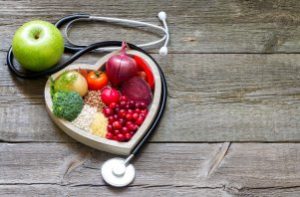Review of scientific research on the effects of various types of meat on the heart
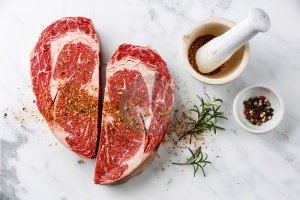 The calls of nutritionists to reduce meat in their diet and switch to a vegetarian menu resonate with a small number of people focused on a healthy lifestyle.
The calls of nutritionists to reduce meat in their diet and switch to a vegetarian menu resonate with a small number of people focused on a healthy lifestyle.
Eating certain types of meat in large quantities leads to obesity. Scientists have established a direct relationship between the growth of cholesterol in the blood and the amount of its consumption. This, in turn, leads to blockage of blood vessels and has an extremely negative effect on the work of the heart.
Content
Harmful effects of meat on the cardiovascular system
 Nothing can satisfy a person's hunger better and faster than meat. This is due to the high amount of fat in the product. The human body receives almost 9 calories when consuming only 1 gram of the product.
Nothing can satisfy a person's hunger better and faster than meat. This is due to the high amount of fat in the product. The human body receives almost 9 calories when consuming only 1 gram of the product.
It contains: iron, zinc, phosphorus and vitamins of various groups. All of them are necessary for the normal functioning of the cardiovascular system. However, the benefits to the body derived from these substances are outweighed by the possible harmful effects.
Cholesterol formed as a result of eating fatty foods accumulates on the walls of blood vessels. Their growths significantly constrict blood flow, which leads to an increase in blood pressure and causes cardiovascular insufficiency. The tissues of the internal organs begin to experience a lack of nutrition and oxygen. These processes can take quite a long time. Their end result is a heart attack or stroke.
The existing types of meat are divided into 2 large groups: white and red. The greatest danger to human health is represented by red varieties, which confirmed by research . During the study of the product by scientists from various countries of the world, it was found out that its effect on the cardiovascular system depends not only on the type, but also on the degree of processing. The probability of mortality is significantly higher from the consumption of meat products: sausages, pates, etc.
The negative consequences begin to be felt especially acutely by a person after 45-50 years. At this age, it is better to replace the animal protein contained in meat with vegetable protein.
4 most useful types
However, some meat can have a positive effect on the human body, including on heart health. Let's consider 4 options.
1. Beef
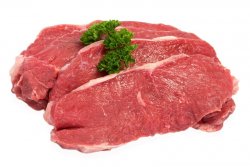 This type of red meat is considered the most beneficial for the heart. Beef is a source of coenzyme Q10. This substance acts as an antioxidant in the human body.
This type of red meat is considered the most beneficial for the heart. Beef is a source of coenzyme Q10. This substance acts as an antioxidant in the human body.
Boiled beef is included in the diet of patients of cardiac clinics, because according to research , it is lean meat that has cardioprotective properties.
Beef stimulates metabolism, copes with depression and regulates the activity of the circulatory system.
Included in the diet of people with heart and vascular diseases, beef helps to produce energy in cadiomyocytes. The substances contained in it have a positive effect on brain cells. Beef heart contains zinc, which is necessary for the functioning of the cardiovascular system.
2. Veal
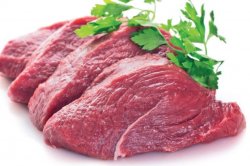 Veal belongs to dietary varieties. Its composition contains a large amount of amino acids necessary for the body. Despite its high calorie content, it contains little fat.
Veal belongs to dietary varieties. Its composition contains a large amount of amino acids necessary for the body. Despite its high calorie content, it contains little fat.
The content of proteins and amino acids included in veal does not decrease after its heat treatment.
The iron contained in veal is completely absorbed by the body. Boiled dishes are included in the diet of even those people who have high cholesterol levels in their blood. They are an indispensable product for diabetics because they do not contain carbohydrates.
The product stabilizes blood pressure and increases the elasticity of vascular walls. Thanks to veal, blood circulation improves. It helps to normalize the heart rate.
3. Chicken
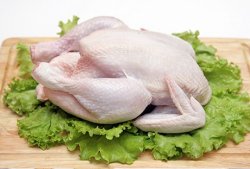 Chicken belongs to dietary varieties. Homemade chicken can bring benefits to the body. The beneficial properties of chickens of industrial cultivation and slaughter are very doubtful. Properly cooked chicken:
Chicken belongs to dietary varieties. Homemade chicken can bring benefits to the body. The beneficial properties of chickens of industrial cultivation and slaughter are very doubtful. Properly cooked chicken:
- Normalizes metabolism;
- Stimulates blood circulation;
- Stabilizes blood pressure.
Taurine, which is part of the product, has a beneficial effect on the work of the heart, and nicotinic acid reduces the risk of heart attacks. Due to the inclusion of chicken in the human diet, cholesterol levels in the blood decrease, and processes of slowing down the development of atherosclerosis occur in the body.
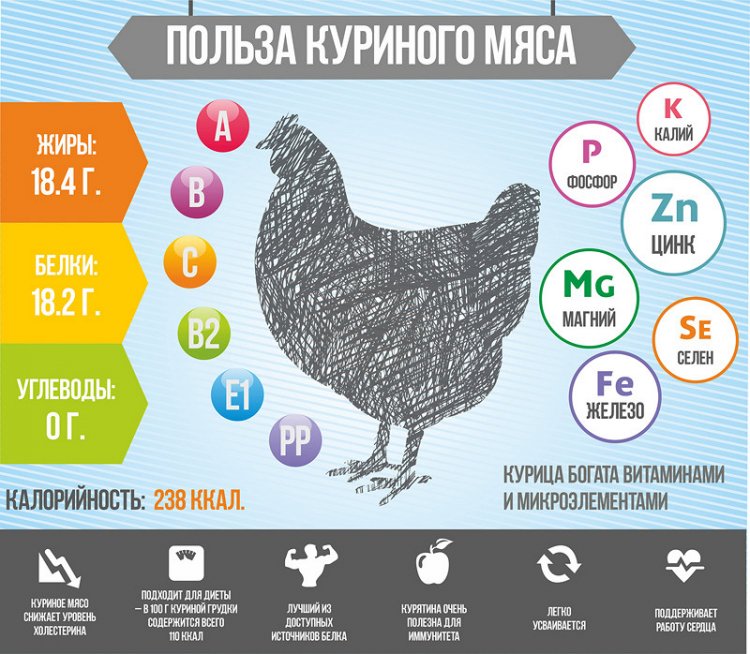
4. Pork
 Pork is considered a low-calorie product containing a large amount of iron in its composition. It is of great importance for the circulatory system. Lean pork tenderloin is recommended to be eaten by people suffering from anemia
, at least once a week for 250-300 grams.
Pork is considered a low-calorie product containing a large amount of iron in its composition. It is of great importance for the circulatory system. Lean pork tenderloin is recommended to be eaten by people suffering from anemia
, at least once a week for 250-300 grams.
Pork can benefit a person if it is baked, boiled or stewed. It is not recommended to eat a lot of fried pork. Abuse of the product can lead to the development of thrombophlebitis, arrhythmia, various pathologies of the heart and blood vessels, as well as to a heart attack.
Avoid semi-finished products, sausages, sausages
 In the course of research conducted by scientists from various countries of the world on the effect of semi-finished products and meat products on the human body, it was revealed that foods increase the risk of:
In the course of research conducted by scientists from various countries of the world on the effect of semi-finished products and meat products on the human body, it was revealed that foods increase the risk of:
- Hypertension;
- Various diseases of the cardiovascular system.
Spices contained in meat products excite the appetite and contribute to a person gaining extra pounds. Obesity leads to shortness of breath, heart attacks and stroke.
See also:
4 rules for safe cooking
To get the maximum benefit from the product, it is necessary:
- Eat meat freed from fat and tendons.
- Boiled, stewed and baked dishes should be included in the diet more often.
- In no case should you fry in sunflower oil. When heated, it breaks down and increases in its composition extremely harmful trans fats, which contribute to an increase in the level of bad cholesterol in the blood. This leads to vascular blockage, the development of atherosclerosis, premature aging, and an increased risk of heart attack and stroke. For frying, use only stable oils: olive, coconut and some others. Is it expensive? See point 2.
- Before cooking, the meat is soaked in cold water.
What varieties can be consumed for diseases?
For heart diseases, low-fat meats can be consumed. Preference is given to:
- Beef;
- Veal;
- Chicken;
- To the rabbit;
- Turkey;
- Lean pork.
Preference is given to white varieties. The daily intake rate should not exceed 70-90 grams. Before cooking, the fat and tendons are cut off from the meat. At the first stage of cooking, it is boiled. After that, it can be baked or made into aspic.
What else is desirable to include in the diet?
In the list of foods useful for the cardiovascular system:
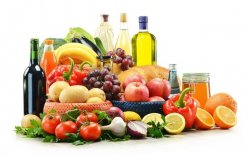
- Fish (walleye, salmon, halibut, herring, mackerel).
- Fresh vegetables (pumpkin, avocado, tomatoes, garlic, onion, pepper of all varieties).
- Fruits (pomegranate, bananas).
- Berries (cranberries, grapes, blueberries, viburnum, strawberries).
- Dried Fruits (dried apricots, figs, raisins, dates, prunes).
- Nuts (walnuts, hazelnuts, almonds).
Conclusion
Mortality from cardiovascular diseases is the scourge of the 21st century. Among the factors that initiate diseases are food consumed by humans. Meat plays an important role in the diet. Depending on the way it is prepared, it can bring harm or benefit to a person.


